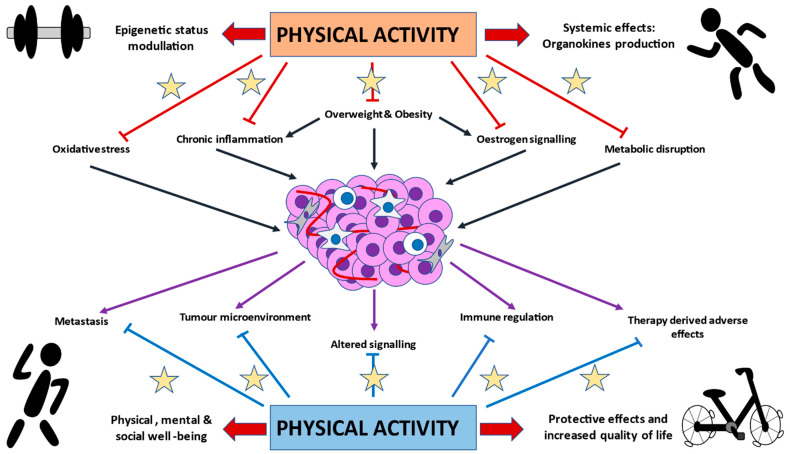Figure 1.
Graphical representation of the potential effects of physical activity (PA) in breast cancer (BC). As it is appreciated, PA may play a prominent role in the prevention of BC through its effects in important carcinogenic drivers, including oxidative stress, chronic inflammation, overweight/obesity, estrogen, and dysmetabolism. The main mechanisms are derived from epigenetic modulatory properties of PA and its systemic effects, including the production of organokines (such as myokines, adipokines, batokines, hepatokines, etc.). On the other hand, once BC is established, PA may also confer substantial benefits for BC patients, through its inhibitory effects on metastasis, molecular signaling, immune dysregulation, or tumor-favoring microenvironment. What is more, PA represents a potential tool to reduce therapy-derived adverse effects, due to its protective capacities and role in the physical, mental, and social well-being, leading to an increased quality of life of BC patients.

